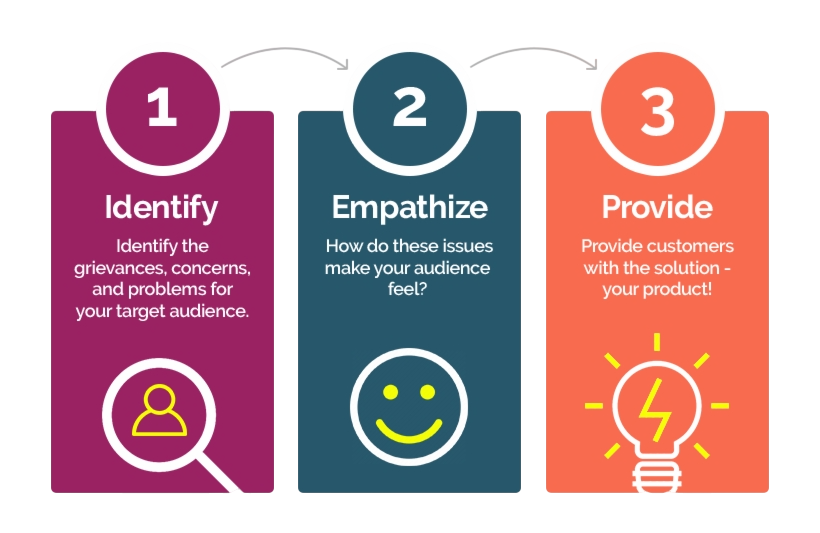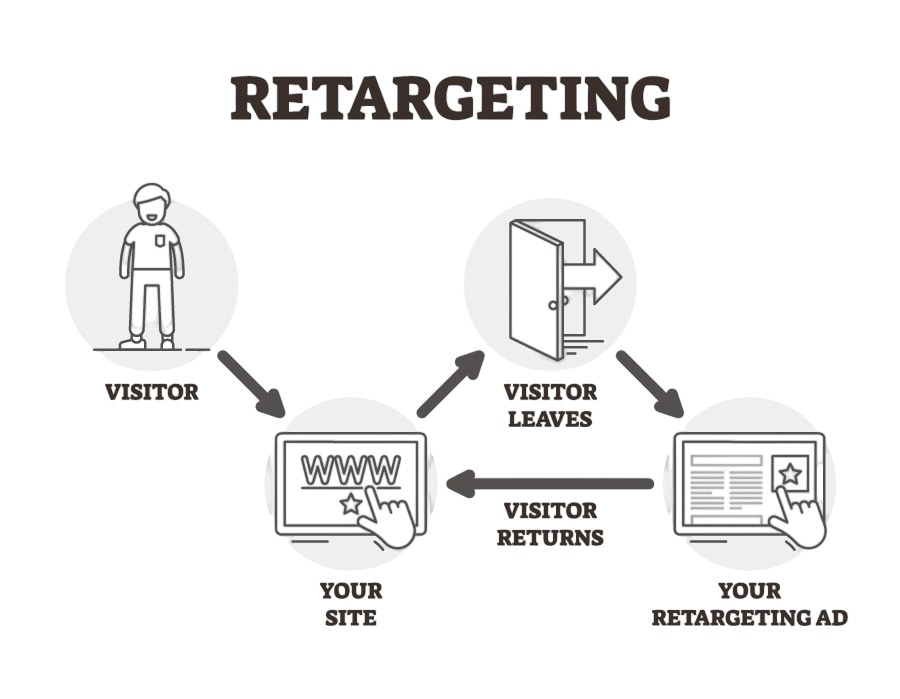
- Introduction
- Not Defining Target Audience
- Ignoring Mobile Optimization
- Poor Content Strategy
- Overlooking SEO Basics
- Not Tracking ROI
- Inconsistent Branding
- Ignoring Social Proof
- Not Using Email Marketing Wisely
- Failing to Retarget
- No Clear Call to Action
Introduction
Digital Marketing Mistakes are more common than many businesses realize, and in today’s hyperconnected digital landscape, companies can no longer afford to ignore the importance of a solid digital marketing strategy. With more than half the global population using the internet, digital channels offer unmatched opportunities to reach, engage, and convert audiences. However, this opportunity comes with its own set of challenges. The rapid pace of change, growing competition, and evolving consumer behavior mean that even experienced marketers can make costly digital marketing mistakes issues addressed in Digital Marketing Training, where learners explore how to adapt to dynamic platforms, overcome algorithm shifts, and refine targeting strategies. By staying agile and data-informed, professionals can avoid common pitfalls and build resilient, results-driven campaigns in a fast-moving digital landscape. These errors, although common, can result in wasted budgets, reduced ROI, lost leads, and damaged brand credibility. Understanding what not to do is just as important as knowing the best practices. Businesses often fall into the trap of following trends without strategy, neglecting data, or failing to consider the full journey of their customers. This guide outlines seven critical digital marketing mistakes that are still widely made and provides insights into how to avoid them. Whether you’re a small business owner, marketing professional, or startup founder, identifying and correcting these missteps is essential to growing your brand online.
Ready to Get Certified in Digital Marketing? Explore the Program Now Digital Marketing Online Training Offered By ACTE Right Now!
Not Defining Target Audience
A major misstep in digital marketing is launching campaigns without a clearly defined target audience. Many businesses mistakenly assume their product or service is for “everyone,” which leads to generic messaging that fails to resonate an issue addressed in Learn Digital Marketing, where professionals are trained to define precise buyer personas, segment audiences by behavior and intent, and craft tailored messaging that drives engagement. By aligning content with specific audience needs, marketers can avoid wasted ad spend and build campaigns that truly connect. Without audience clarity, marketing efforts become scattered and ineffective, resulting in poor engagement and low conversion rates.

Knowing your target audience means understanding their age, gender, location, job role, income, challenges, goals, and interests. This clarity helps create personalized content, select the right platforms, and craft messaging that speaks directly to your audience’s needs. Tools such as Google Analytics, social media insights, and customer feedback surveys can provide valuable data about who your real customers are. Developing buyer personas semi-fictional representations of your ideal customers allows you to visualize who you are marketing to and tailor strategies accordingly. Ultimately, audience definition lays the foundation for successful segmentation, targeting, and positioning, enabling you to allocate resources effectively and generate higher ROI from your campaigns.
Ignoring Mobile Optimization
- With over 60% of internet traffic coming from mobile devices, not optimizing your digital presence for mobile is a critical error. A website or landing page that looks great on a desktop but performs poorly on a smartphone will drive users away, increase bounce rates, and hurt your search engine rankings.
- Consumers expect fast, seamless experiences on all devices, and failing to meet those expectations can damage your credibility. Mobile optimization goes beyond just making your website “fit” smaller screens. It involves responsive design, faster load times, easy navigation, readable fonts, mobile-friendly forms, and CTA buttons that are easy to tap.
- Moreover, Google uses mobile-first indexing, meaning it primarily evaluates the mobile version of your content for ranking purposes. To ensure a smooth mobile experience, use responsive frameworks, compress images, eliminate unnecessary scripts, and test your website on various devices.
- Utilize tools like Google’s Mobile-Friendly Test and PageSpeed Insights to assess and improve performance. By catering to mobile users, you not only enhance user satisfaction but also improve SEO rankings and conversion potential.
- Content is the cornerstone of digital marketing. It drives SEO, nurtures leads, educates customers, and builds brand authority. However, many businesses make the mistake of publishing content without a cohesive strategy a misstep addressed in Types of Digital Marketing, where content marketing is positioned alongside SEO, PPC, email, and social media as a foundational channel. By aligning content with audience intent, campaign goals, and platform behavior, marketers can maximize impact and avoid wasted effort.
- Random blog posts, outdated videos, or irrelevant social updates often fail to generate meaningful engagement or deliver results. A strong content strategy begins with identifying your business goals, understanding your audience’s pain points, and determining what kind of content aligns with both.
- Content types may include blog articles, videos, podcasts, infographics, webinars, and social posts. Each should serve a specific purpose whether it’s driving traffic, increasing awareness, or supporting sales. Moreover, consistency in publishing and tone of voice is vital.
- Inconsistent or sporadic content confuses audiences and weakens brand identity. You should also conduct content audits regularly to eliminate outdated information and identify gaps. A content calendar can help you stay organized and ensure alignment with marketing goals.
- Ultimately, a poor content strategy leads to missed opportunities. On the other hand, a focused, audience-driven content plan can significantly improve your online visibility, establish thought leadership, and convert followers into loyal customers.
- Your brand is more than a logo, it’s the personality, voice, and promise your business communicates across all touchpoints. Inconsistent branding confuses customers, weakens credibility, and makes your business less memorable.
- This includes inconsistent colors, fonts, tone of voice, messaging, and even the way your brand interacts with audiences on different platforms. Brand consistency builds trust and recognition an essential principle emphasized in PPC Resources & Communities, where marketers share strategies for aligning ad copy, landing pages, and visual identity across campaigns. By maintaining cohesive branding, PPC professionals reinforce credibility, improve user experience, and drive higher ROI through unified messaging.
- When customers see your brand as reliable and familiar, they are more likely to engage and convert. Whether you’re posting on Instagram, sending an email, or publishing a blog post, your branding elements should be unified and instantly recognizable. To maintain consistency, develop and follow a brand style guide. This document should outline visual elements, preferred terminology, tone of voice, and brand values.
- Train your team to follow these guidelines in every piece of communication. Without consistent branding, your efforts become fragmented, and your brand identity fades into the noise.
- In the age of information overload, trust is a critical factor in consumer decision-making. Social proof such as customer reviews, testimonials, case studies, influencer endorsements, and user-generated content plays a major role in shaping perceptions.
- Ignoring this powerful element can reduce conversions and deter potential customers. Buyers are more likely to trust real people than marketing copy. When prospects see that others have had positive experiences with your brand, they’re more likely to take action.
- This is especially true in industries with high competition or long sales cycles. Collect and showcase reviews on platforms like Google, Yelp, and Trustpilot. Feature testimonials and case studies prominently on your website. Encourage happy customers to share their experiences on social media.
- Use social proof strategically in emails, landing pages, and retargeting ads to build credibility and drive conversions. By ignoring social proof, you miss a valuable trust-building tool. Embracing it, however, amplifies your credibility and can be the final nudge a prospect needs to choose your brand over a competitor.
- The average online conversion rate is less than 3%. This means that 97% of visitors leave your website without taking action. Failing to retarget these users is a significant lost opportunity. Retargeting allows you to reconnect with warm leads and guide them back into your sales funnel.
- Retargeting works by showing ads to users who have previously visited your website, interacted with your brand, or abandoned a shopping cart. These ads appear on platforms like Facebook, Instagram, Google Display Network, or YouTube, keeping your brand top-of-mind a tactic central to The Scope of Digital Marketing, where retargeting plays a pivotal role in converting warm leads. By leveraging pixels and behavioral data, marketers can deliver personalized messages that re-engage users and drive them back into the funnel with higher intent.
- When done correctly, retargeting campaigns can drastically increase conversions at a lower cost than cold traffic campaigns. Dynamic retargeting which shows users the exact products they viewed is especially effective for e-commerce businesses.
- Neglecting retargeting means you’re giving up on potential customers too soon. With strategic remarketing, you can stay engaged with interested prospects, overcome objections, and ultimately increase conversions and ROI.
To Explore Digital Marketing in Depth, Check Out Our Comprehensive Digital Marketing Online Training To Gain Insights From Our Experts!
Poor Content Strategy
Overlooking SEO Basics
Search engine optimization (SEO) remains one of the most cost-effective ways to attract organic traffic. Yet many businesses overlook or misunderstand SEO fundamentals. They may stuff keywords unnaturally, ignore meta descriptions, forget image alt tags, or fail to optimize URLs. This not only hinders rankings but also compromises user experience. SEO is about helping search engines understand your content and ensuring users can find relevant answers to their queries. Basic on-page SEO involves optimizing title tags, headers, and content with relevant keywords. Off-page SEO includes acquiring backlinks from reputable sites, while technical SEO ensures your site is crawlable and fast. Additionally, understanding search intent is crucial core pillars emphasized in Digital Marketing Training, where learners master how to build authority through link strategies, optimize infrastructure for indexing, and align content with user intent. This holistic approach ensures that SEO efforts drive visibility, relevance, and sustainable traffic across search engines. Creating content that aligns with what users are actually looking for whether it’s informational, navigational, or transactional improves relevance and rankings. Use tools like Google Search Console, SEMrush, or Ahrefs to monitor keyword performance and identify improvement areas. Ignoring SEO means you’ll miss out on long-term visibility. While paid ads can offer quick results, SEO is a sustainable strategy that builds traffic and authority over time. Incorporating even the basics can drastically enhance your digital performance.
Looking to Digital Marketing Training? Discover the Digital Marketing Expert Masters Program Training Course Available at ACTE Now!
Not Tracking ROI
Running campaigns without measuring results is like shooting in the dark. Many businesses invest in digital marketing be it SEO, social media, or PPC without setting clear goals or tracking return on investment (ROI). This mistake often leads to inefficient spending and missed opportunities for optimization. Understanding what works and what doesn’t is vital to improving performance an imperative explored in What is Digital Transformation, where organizations learn to rethink operations, deploy new technologies, and generate actionable product data. This transformation lays the foundation for digital optimization, enabling insight-driven decisions, agile workflows, and measurable outcomes that accelerate growth. Tracking metrics such as cost per click (CPC), customer acquisition cost (CAC), conversion rate, lifetime value (LTV), and overall ROI helps marketers fine-tune their strategies. Relying solely on vanity metrics like likes or impressions can be misleading if they don’t translate into business outcomes. Using analytics platforms like Google Analytics, Meta Business Suite, or HubSpot allows for data-driven decision-making. Implement UTM parameters, set up goals and funnels, and regularly analyze campaign reports. Make sure to align metrics with specific objectives, brand awareness, lead generation, sales and review them consistently. By not tracking ROI, you’re essentially wasting budget and effort. However, by focusing on key performance indicators (KPIs), you can make smarter decisions, allocate resources effectively, and drive measurable business growth.
Inconsistent Branding
Preparing for Digital Marketing Job Interviews? Have a Look at Our Blog on Digital Marketing Interview Questions and Answers To Ace Your Interview!
Ignoring Social Proof
Not Using Email Marketing Wisely
Email marketing remains one of the highest ROI channels in digital marketing. Yet many businesses misuse it by sending irrelevant, overly frequent, or poorly designed emails. This leads to unsubscribes, spam reports, and reduced deliverability. The key to successful email marketing is relevance and value principles that also apply to video content strategy in Guide to YouTube Marketing, where creators learn to align video topics with audience intent, optimize metadata for discoverability, and deliver consistent value through engaging formats. Just like email campaigns, YouTube success depends on understanding viewer expectations and delivering content that resonates. Personalization, segmentation, and timely content are critical. For example, new subscribers should receive a welcome series, while returning customers may get loyalty rewards or product recommendations. Batch-and-blast emails with no segmentation often result in low open rates and poor performance. Use automation tools like Mailchimp, ActiveCampaign, or Klaviyo to create behavior-triggered campaigns. Track metrics like open rates, click-through rates, and unsubscribe rates to refine your strategy. A/B testing subject lines, send times, and content layouts can also improve results. Ignoring the power of email or misusing it can waste potential revenue. But when used strategically, email marketing builds relationships, nurtures leads, and drives conversions at a fraction of the cost of other channels.
Failing to Retarget

No Clear Call to Action (CTA)
You’ve created great content, optimized your ads, and attracted visitors but if you don’t tell them what to do next, all your efforts may be wasted. A missing or unclear call to action is one of the simplest yet most damaging digital marketing mistakes. Every piece of content should have a goal, and a strong CTA guides users toward that goal, whether it’s signing up for a newsletter, booking a demo, downloading a resource, or making a purchase. CTAs should be clear, compelling, and aligned with the user’s stage in the buyer journey an essential tactic emphasized in Digital Marketing Training, where marketers learn to tailor calls-to-action for awareness, consideration, and decision stages. Whether it’s offering educational content to new visitors or prompting demos for high-intent users, aligning CTAs with buyer intent improves engagement, trust, and conversion rates across the funnel. Use action-oriented language, emphasize benefits, and ensure the CTA stands out visually. Avoid vague phrases like “Click here” and instead use precise language like “Download Your Free Guide” or “Get Started in 2 Minutes.” Test different CTA placements, formats, and messages to see what resonates most with your audience. Without a clear CTA, users are likely to leave without taking action, reducing your conversions and ROI, a costly example of digital marketing mistakes in action. But with a strong CTA strategy, you can guide users toward meaningful engagement and business outcomes.




